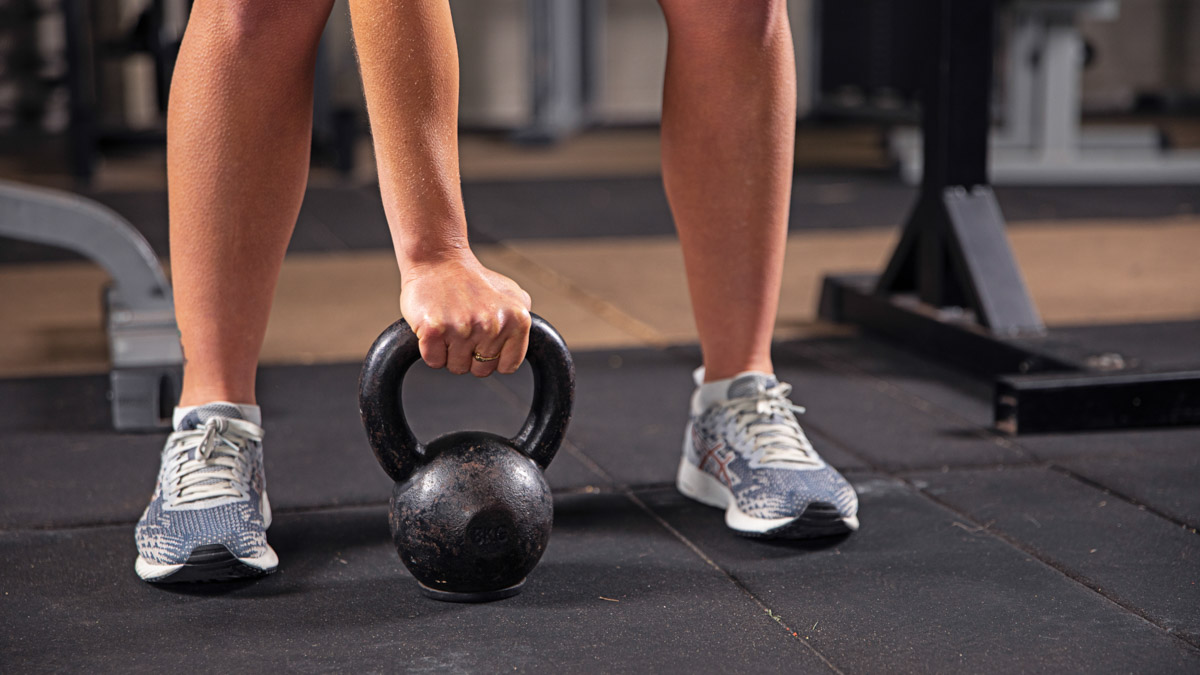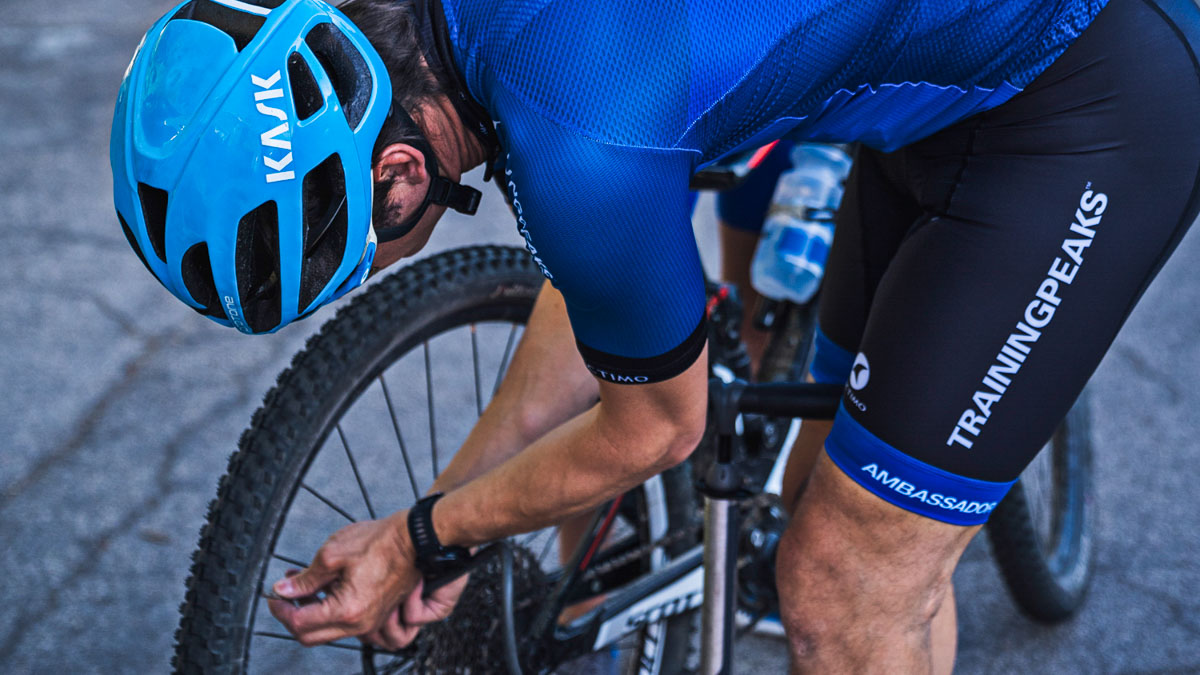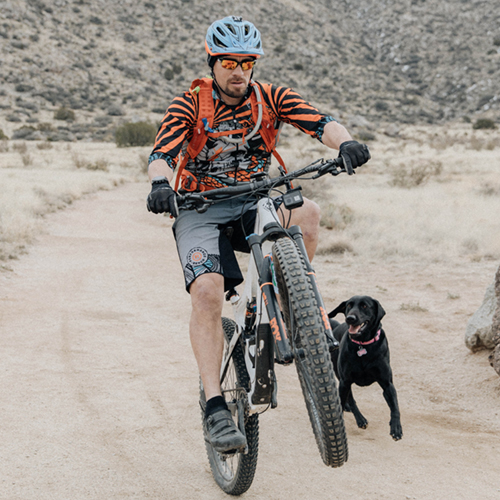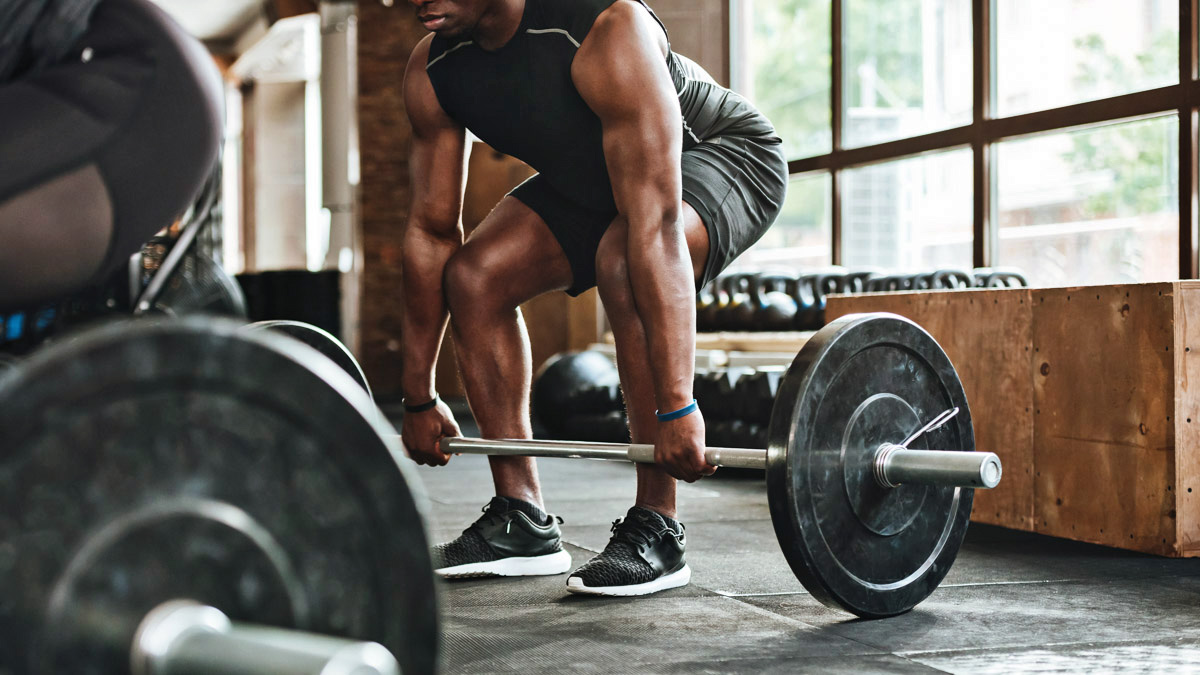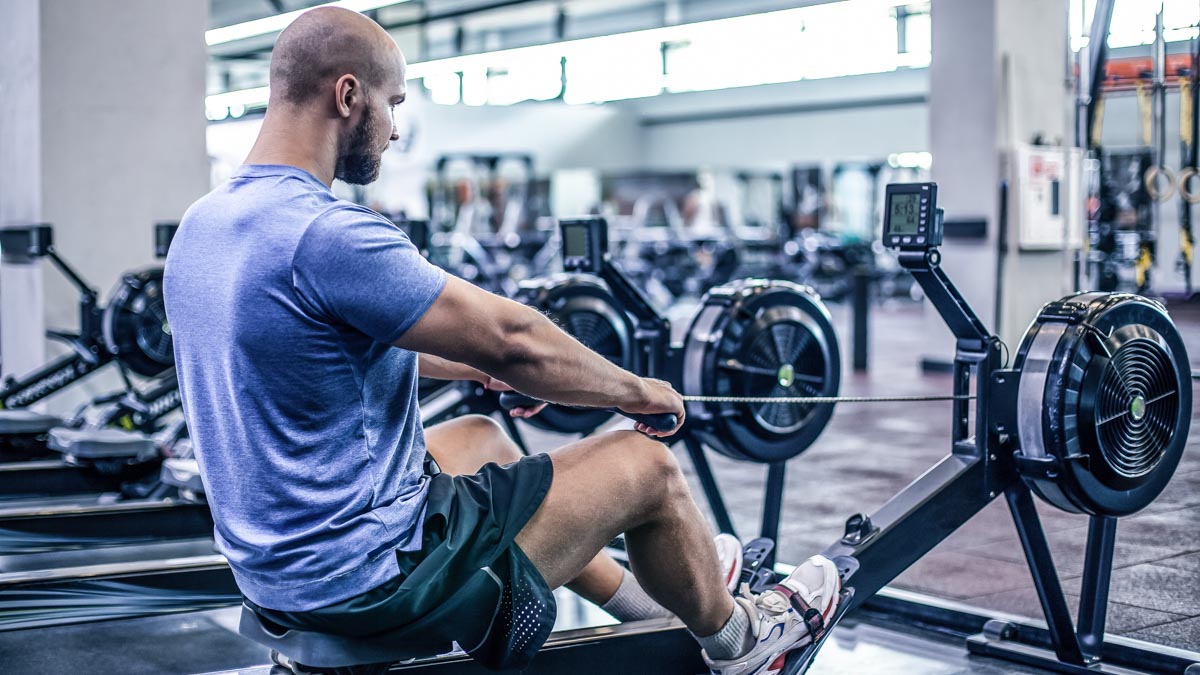Whether it’s longer steady-state sessions, hill ascents and descents, or intervals, you’ve probably got the endurance side of your training covered. But as Lawrence Herrera explored in a recent TrainingPeaks series, your body also needs to be strong, powerful, and resilient enough to handle the force you create and the load you subject yourself to during such workouts. With that in mind, here are three essential exercises to add to your gym routine.
1. Farmer’s and Overhead Carries
While they’re not included in many coaches’ lists of fundamental movement patterns, carries are extremely practical full-body exercises that require you to maintain control and stability while you’re generating motion. The easiest variation to start with is the farmer’s carry, which involves picking up two equally weighted dumbbells, kettlebells, or, if your equipment is limited, filling two empty milk or water jugs with sand. Then, as the name suggests, carrying them.
Once you’ve got this down, you can change the stimulus by using a different weight in each hand. Add in an anti-rotation element by switching to a one-hand suitcase carry (which, perhaps unsurprisingly, will prepare you for lugging a suitcase in an airport once travel restrictions are lifted or for lugging your child’s car seat around). Although you shouldn’t try to go as heavy, an overhead or waiter carry will challenge you by raising the center of gravity of the weight and requiring you to create more stability in your shoulder and thoracic spine. If you’re going to do overhead and farmer’s and/or suitcase carries in the same session, do the former first, as you don’t want to risk putting a weight overhead when you’re fatigued at the end of a workout.
Here are a few videos to help you hone your technique:
Farmer’s Carry Technique Video
Overhead Carry Technique Video
2. Goblet Squat
Doing back and front squats will allow you to add more load and work on absolute strength. But the reason that master coaches like Dan John are such big proponents of the goblet variation is that it forces you to maintain an athletic position while allowing you to explore a deeper position than you might be able to manage with a barbell on your back or in the front rack position.
A goblet squat also encourages you to keep your thoracic spine organized as you pin the weight to your chest. Plus, there’s a grip component as you need to grab the end of the dumbbell or handle of the kettlebell tightly to keep it in place, calling your biceps and forearm muscles into action. If you find it challenging to get the weight up into the starting position, try putting it on a stable surface like a weight bench or plyo box and then picking it up, rather than having to pick it up off the floor.
Want to add an explosive component to your session? Do a set of five vertical jumps – making sure to stick the landing on each rep – immediately after each set of goblet squats. Want to add more weight than you can handle in the goblet position but don’t have access to a barbell? Then try mastering using two kettlebells in the front rack position. Just start slowly and practice getting the bells into the starting stance.
Here’s a video to show you the proper technique:
3. Kettlebell Deadlift and Swing
OK, I snuck in two exercises here. The reason is that it’s best to manage a slower hinge exercise like the kettlebell deadlift before moving onto a dynamic one like the swing. Much like the goblet squat vs. barbell front and back squats, using a kettlebell won’t allow you to lift as much weight. But in some ways, it’s arguably more transferable to everyday life. If you need to lift one end of your couch so your significant other can vacuum underneath it or you’re loading boxes into and out of a U-Haul truck when helping a buddy move, you’re likely to be using a narrower grip than you’d employ for a barbell deadlift. Which is where the kettlebell variation comes in.
Another plus for this iteration of the deadlift is that it will help you emphasize the medial hamstrings and adductors. In endurance sports, the reason that ITB syndrome is so prevalent is that much of your training targets the outer seam of each thigh. So a kettlebell deadlift – where you’re lifting the weight from between your feet – can help you redress the balance and employ those strong but often underdeveloped inner hamstrings. This can also help prevent issues on the inside of the knee, as well as reduce the incidence of groin pulls.
Once you’ve got the kettlebell deadlift down, you can move on to the swing. Make sure that on the way up, you’re squeezing your glutes and abs hard, and lock your shoulder blades back and down so your shoulders don’t come too far forward and your spine stays organized. Want a further challenge? Then try one-handed swings, which will demand that you resist your trunk’s attempt to rotate.
Here are two videos to help you with your technique:
Start incorporating these key strength training moves into your training plan, and you’ll be seeing the benefits sooner rather than later.
